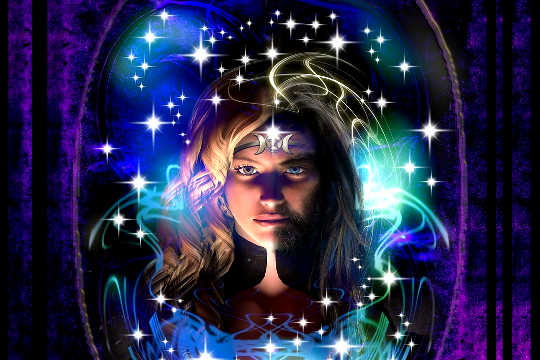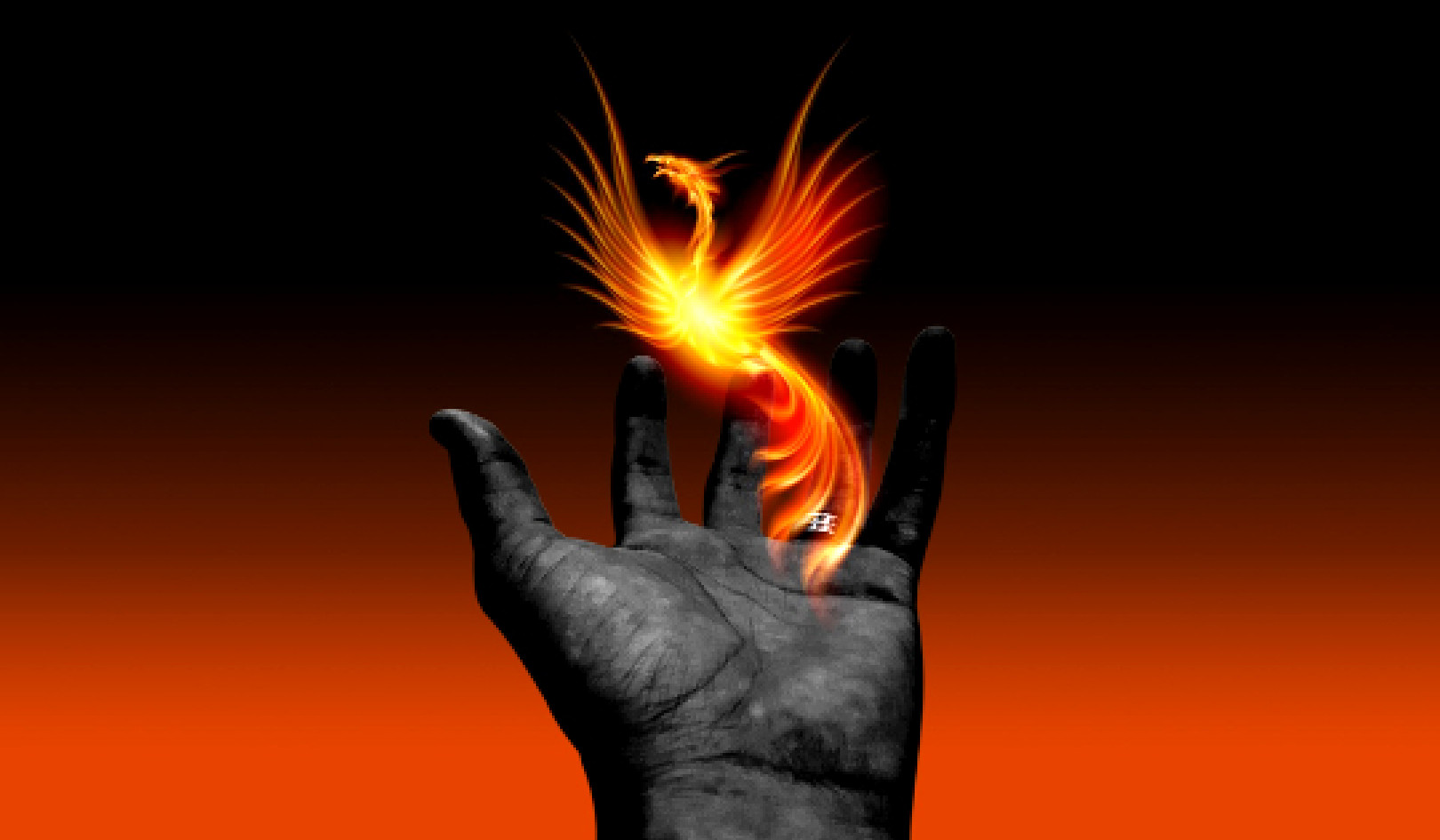
Image by Solarus
Every culture has its own myths, legends, and prophecies of the ancient past. These original cultures were Earth/star-based shamanic societies with an oral tradition and specifically assigned record keepers who saved the history in story form.
What is fascinating about these stories is that from culture to culture there are similar themes. Ancient civilizations and societies including China, Babylonia, Wales, Russia, India, America, Hawaii, Scandinavia, Sumatra, Peru, and Polynesia all have versions of a giant flood—many occurring in the same geological time frame, and all profoundly similar to the biblical account.
The following is a Creation story told by Lee Brown from his book, North American Indian Prophecies.
Guardianship
There was the cycle of the mineral, the rock. There was the cycle of the plant. And now we are in the cycle of the animals, coming to the end of that and beginning the cycle of the human being.
When we get to the cycle of the human being, the highest and greatest powers that we have will be released to us. They will be released from that light or soul that we carry to the mind. But right now we’re coming to the end of the animal cycle, and we have investigated ourselves and learned what it is to be like an animal on this Earth.
At the beginning of this cycle of time long ago, the Great Spirit came down and He made an appearance and He gathered the peoples of this Earth together, they say on an island which is now beneath the water and he said to the human beings, “I’m going to send you to four directions, and over time I’m going to give you some
teachings, and you will call these the Original Teachings and when you come back together with each other you will share these so that you can live and have peace on Earth, and a great civilization will come about.”
And he said, “During the cycle of time I’m going to give each of you two stone tablets. When I give you those stone tablets, don’t cast those upon the ground. If any of the brothers and sisters of the four directions and the four colors cast their tablets on the ground, not only will human beings have a hard time, but almost the Earth itself will die.”
And so he gave each of us a responsibility and we call that the Guardianship.
Anthropologists, sociologists, and historians, in an approach known as comparative mythology, have compared the mythologies of multiple societies in an attempt to discern global history. Immanuel Velikovsky’s, Ages in Chaos, first published in 1952, is an example of an attempt to identify shared themes and characteristics. Velikovsky’s work points to interesting possibilities.
By adjusting the time line of biblical and Egyptian history by 600 years, Velikovsky found that the two accounts, the Israeli and the Egyptian, became congruent. Both of these versions of history reported natural disasters or “plagues” which, with the 600-year time adjustment, lined up, creating a historical Egyptian account of the biblical Israelite Exodus.
Velikovsky believed the catastrophes that occurred within the memory of humankind were recorded in the myths, legends, and written history of all ancient cultures and civilizations. He proposed that this comparative mythology evidenced periodic natural catastrophes that were and can be global in scale.
Immanuel Velikovsky’s earlier work, Worlds in Collision, first published in 1950, suggested that asteroids or comets orbiting the sun periodically pass close to the Earth. Velikovsky felt these close encounters may account for the phenomena reported in the Bible stories.
If this is indeed the case, it serves as an example of how our relative position within the solar system, galaxy, and universe not only affects the frequency but also physical, geological, and climactic events on Earth. Furthermore, these incidents can be somewhat predictable if one knows where to look and how to interpret what one sees.
While Worlds in Collision was initially not well received, new geological and recently uncovered historical evidence lends this work more credence, which prompted a reprinted, unchanged edition to be published in 2009 as a nonfiction work.
Natural disasters are indeed natural, predictable, and recurring. Over the ages, shaman have been able to steer their people to safe passage by tapping into the frequencies and energies emanating from the universe. A biblical example of this level of shamanic mastery is the story of Moses, who led the Israelites out of Egypt.
Let’s explore several indigenous teachings and practices from the Americas and Europe. By employing comparative mythology, we can gain a greater understanding of the changes we are currently facing. It is clear that the commonality among most native peoples is the concept of maintaining balance among the Earth, the planets, and the stars.
While examples can be found in almost every nationality and culture, for expediency, I have chosen only two American Indian tribes—the Lakota and the Zuñi—and an overview of the ancient European Celtic traditions. But first, let’s examine the following Lakota prophecy that eloquently speaks of the trends we are experiencing today.
The Lakota Tradition
The Lakota, whose name means friends or allies, are a Native American tribe, descendants of the original inhabitants of North America. Most know them by the name of Sioux, given to them by the French, which was actually a derogatory name meaning throat slitter. They are one of seven related tribes inhabiting the most western portion of the United States including lands in both North and South Dakota. One of their most famous sacred ceremonial sites is Devil’s Tower, in the Black Hills.
The Lakota exemplify a culture that rebalances its people with Heaven and Earth by annually performing ceremonies, during which the Earth’s shifting relationship with all other heavenly bodies is taken into account by adjusting the people’s relationship with the stars. In this way the Lakota people recalibrate annually, enabling them to stay in synch with the ever-changing frequencies of the universe.
The Lakota have individuals from special, designated lineages who have passed these sacred ceremonies down their line. Each lineage and ceremony represents a star in a particular constellation. To this day, in the spring of each year, individuals from the Lakota nation go on a pilgrimage following the sun’s path through the constellations, performing ceremony at the corresponding sacred sites in the Black Hills.
The following statement from Charlotte Black Elk (from: Ronald Goodman’s Lakota Star Knowledge) is an example of the Lakota shaman attuning to the balance of Heaven and Earth and offering it to their people.
It is our rule that the pipe is so sacred that it must not be casually drawn. With the Black Hills Ceremonies of Spring, the pipe becomes symbolically present through the tobacco to fill the pipe, Pipestone quarry, the bowl of the pipe, with Devil’s Tower, and the fire to light the pipe.
As the pattern moves across the sun at daybreak and sunset, creation is filling, lighting and smoking the pipe with the sacred hoop—a hocoka, where all of creation is present, altogether. On Earth, the Lakota participate in this same ceremony of renewal, in the same way, a fulfillment of the Oneness of the entire universe.
The ceremony on Earth and in heaven sends a voice that, with the four relations, we may live well in the manner suited to the way the Power of the World lives and moves to do its work that we may all walk with our generations in a dancing manner on the good red road. —Charlotte A. Black Elk
Zuñi Shalakos
The Zuñi people are a tribe of Pueblo Native Americans in the United States. The Zuñi Pueblo, consisting of approximately 12,000 people, is located about 150 miles west of Albuquerque, in the northwestern part of New Mexico. The Pueblo culture is located in the present-day Four Corners area of the United States, comprising southern Utah, northern Arizona, northwest New Mexico, and southern Colorado.
The Zuñi peoples also perform ceremonies to balance Heaven and Earth, the most outstanding of which are the Kachina dances. Shalako, one of the most famous, is a series of sacred dances, songs, and ceremonies conducted in the Zuñi Pueblo at the winter solstice, following the harvest. It celebrates the end of the old year and the beginning of the new year and blesses all of the Pueblo houses erected during the year.
The exact date of the Shalako is calculated annually by Zuñi medicine men, known as Zuñi Bow priests, who use an ancient formula passed down through the generations. Traditionally, the Shalako dance is held on the 49th day past the tenth full moon. This is yet another demonstration of an ancient people’s strict adherence to heavenly cycles.
The Shalako dance also exemplifies traditional ceremonies performed by indigenous peoples to balance the members of the tribe with Heaven and Earth. It is understood that all illness is a result of being out of balance with one’s environment. These sacred dances are considered essential healing practices for the well-being of the tribe.
The Celtic Approach
When thinking of the Celtic traditions, we often envision people from Scotland and Ireland, when in fact, the Celts occupied what is now known as Eastern Europe, Greece, Spain, Northern Italy, Western Europe, England, Wales, Scotland, and Ireland. Anyone who has European ancestral roots most likely has some Celtic genealogy.
The Celtic culture goes back over 2,700 years. Like most indigenous cultures, their history and myths were originally preserved through the oral tradition. The earliest Celtic writings paint an ancient Celtic worldview that is poetic and anchored in a deep respect for nature. It views the spiritual and the material worlds as a seamless whole. The Celtic culture was integrated with nature and expressed itself through the principles of the natural world.
Celtic tradition and belief have not remained static, but have continuously developed and progressed without a break over the centuries.
The Celts understood that all of existence has a cyclic nature, with everything existing on several simultaneous levels. They were aware of the direct continuity between the material world and the “other world” that interpenetrates and affects the visible world. The “other world” is a metaphoric representation of the unseen influences behind the laws of nature, or in other words, the quantum field.
The Celtic tradition is rich and extensive and, like other indigenous cultures, the Celts performed ceremony to honor and hold the alignment between humans, the Earth that sustained them, the stars and the seasons.
The four most significant Celtic celebrations honoring the Earth’s annual cycles fall at the midpoints between the equinoxes and solstices. Samhain (pronounced Sow’en) is the mid-point between the Fall Equinox and the Winter Solstice; Imbolc (pronounced Imm’ ulk) is the half-way point between the Winter Solstice and the Spring Equinox; Beltane (pronounced Bell’ tane) is the midpoint between the Spring Equinox and the Summer Solstice; and Lughnasadh (pronounced Loo’ nassa) is the celebration of the midpoint between the Summer Solstice and the Fall Equinox.
Samhain
Samhain is the festival of harvest and marks the end of the growing season. The celebration itself is held on October 31 through November 1, while the Samhain season is November 1 through January 31. Samhain, the Celtic New Year, is considered to be the end of the light half of the year. Traditionally a time of inward turning and contemplation, Samhain is associated with the coming of death and remembrance of the ancestors. Bonfires were a large part of this ancient celebration. People would herd their livestock between two bonfires as a cleansing ritual. Bones of slaughtered livestock were cast into the fire to express gratitude.
Imbolc
Imbolc is the Celtic celebration performed to mark the beginning of spring. The Imbolc ritual is held February 1 through 2, while the season itself runs from February 1 through April 30. The Imbolc Festival, associated with the goddess St. Brigid, honors innocence, new beginnings, and the sowing of seeds for the coming year.
Beltane
Beltane, which takes place on the first day of May, or May Day, marks the midpoint in the sun's progress between the Spring Equinox and Summer Solstice. Its season runs from May 1 through July 31, during which the cycle of youth, passion, procreation and growth is honored. Beltane’s infamous bonfires and amorous revelry from pagan times tend to overshadow our modern-day understanding of this sacred holiday.
Lughnasadh
Lughnasadh is celebrated on August 1 to honor both the physical and spiritual harvests of the previous months. Its season runs from August 1 through October 31 and is seen as a time to give thanks to the spirits and deities for the beginning of the harvest season. It also involves the offering of prayers and gifts in exchange for protection of the crops that remain in the field. This is considered the time to honor the god Lugh, a deity of storms and lightning. Lughnasadh is the first of the three autumn harvest festivals, the other two being the Fall Equinox and Samhain.
Many other cultures like the Lakota, Zuñi, Celts, and Mayans, understood that humankind would fall out of the natural order to the extreme detriment of the people unless periodic readjustment with the natural order of life was maintained. We are currently experiencing the detrimental effects of living out of balance with our environment.
While we are quite impressed with our own advances in “conquering nature,” we need only to look around to see that ill health, depression, and disease have reached epidemic proportions in our modern society.
The Celestial Ballet
Dressed in gossamer blue and white, Terra pirouettes,
Her perpetual motion casting her first in light then in shadow.
She dances in a counterclockwise circle
While Luna her understudy revolves around her in flawless accord.
Together with other dancers they orbit around the golden prima donna
Who herself circles around the starlit stage.
The music is harmonious, complex and ever changing
As the dancers spin and twirl to its intonation.
They live to dance,
They dance to live,
Never questioning the composition or the choreography.
©2013, 2016 by Gwilda Wiyaka.
Excerpted with the author's permission from the book
"So, We're Still Here. Now What?" All Rights Reserved.
Article Source
So, We're Still Here. Now What?: Spiritual Evolution and Personal Empowerment in a New Era (The Map Home)
by Gwilda Wiyaka
 So, We're Still Here. Now What? takes you beyond the end of the Mayan calendar and into the predicted New Era, helping you rearrange your life so you can shift more easily with the ongoing changes that lie ahead. The book delves deeply into the hidden principles behind effective shamanic practices that were used long ago to steward people through times of change, and it teaches you how to use these principles to navigate through today's disruptions. The concepts Wiyaka offers have been field-tested in her thirty years of private practice as a shamanic practitioner. The book was the First Runner Up in the COVR Visionary Awards: Alternative Science Division. This is a solid reference volume that belongs in every serious seeker's private collection. (Also available as a Kindle edition.)
So, We're Still Here. Now What? takes you beyond the end of the Mayan calendar and into the predicted New Era, helping you rearrange your life so you can shift more easily with the ongoing changes that lie ahead. The book delves deeply into the hidden principles behind effective shamanic practices that were used long ago to steward people through times of change, and it teaches you how to use these principles to navigate through today's disruptions. The concepts Wiyaka offers have been field-tested in her thirty years of private practice as a shamanic practitioner. The book was the First Runner Up in the COVR Visionary Awards: Alternative Science Division. This is a solid reference volume that belongs in every serious seeker's private collection. (Also available as a Kindle edition.)
About the Author

Gwilda Wiyaka is the founder and director of Path Home Shamanic Arts School and she is the creator of online shamanic classes for children and adults, designed to support spiritual evolution and personal empowerment through understanding and applying the shamanic arts in daily life. Gwilda is also a preceptor for the University of Colorado School of Medicine, where she provides instruction to medical doctors on the modern interface between shamanism and allopathic medicine. She is the host of MISSION: EVOLUTION Radio Show, broadcast internationally through The “X” Zone Broadcasting Network, www.xzbn.net. Her past episodes can be found on www.missionevolution.org. An experienced spiritual teacher, inspirational speaker and singer/songwriter, she conducts workshops and seminars internationally. Find out more at www.gwildawiyaka.com and www.findyourpathhome.com



























